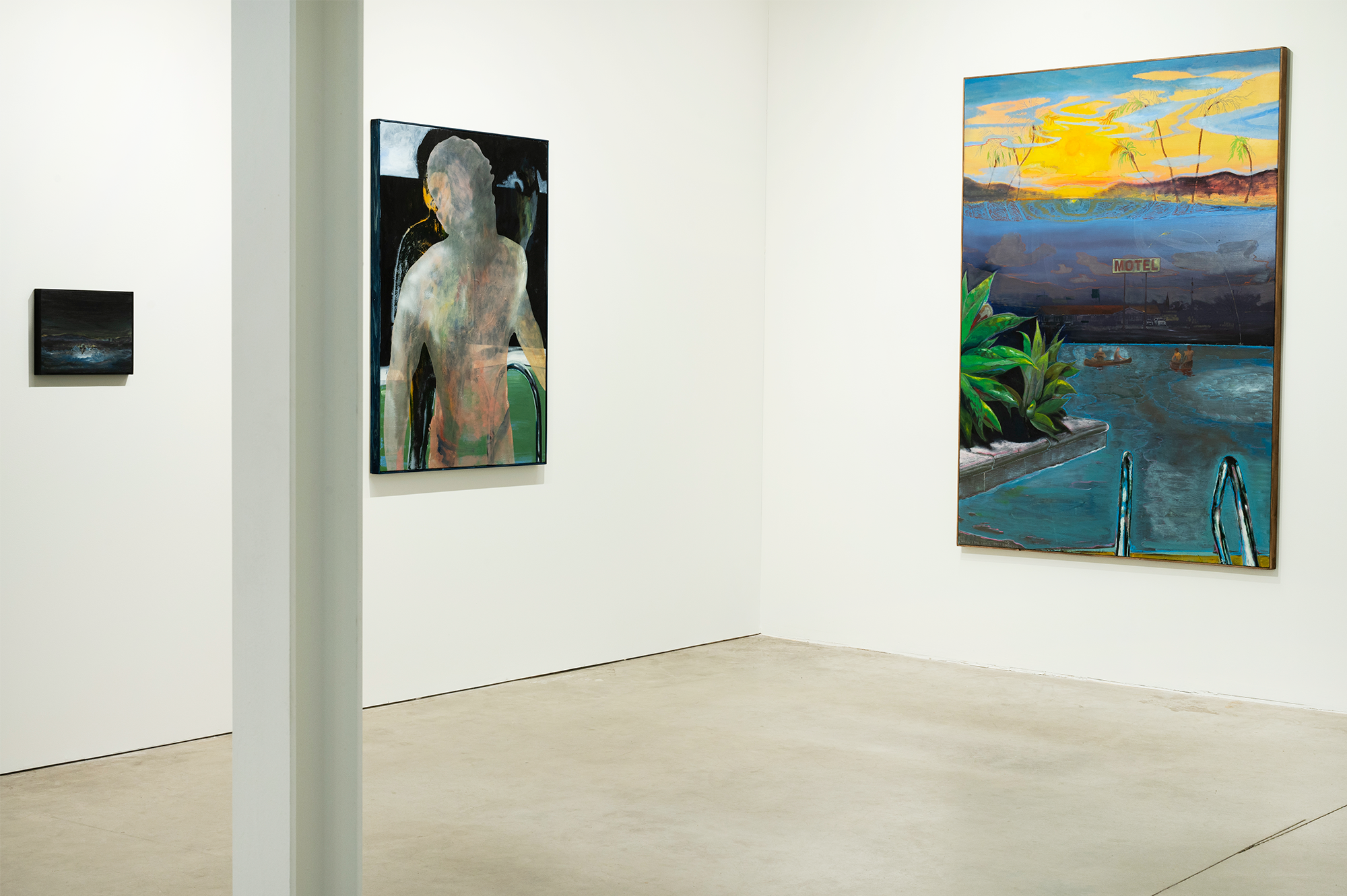Bram Kinsbergen
‘Waking up the roads’
09.01.2025 — 16.02.2025
Exhibition view, ‘Waking up the roads’, PLUS-ONE Projects, 2025
The way we depict the world influences how we think about it, and even how we act. This is not a new idea; it is as old as the first cave drawings, some sixty thousand years ago. The best hunting grounds were mapped with chalk and coal; an ode to the animals that were hunted, probably in the hope of achieving greater success in hunting, prompted by the desire to have more control over the wilderness around us. Today even the most remote corners of the world have been carefully charted; and in many ways we have almost endless control over the world around us. Yet our desire to come face to face with a nature that escapes our influence has not abated. On the contrary, the more we record and depict of the world, the more we yearn for something that has not been seen before, for something that has not yet been touched by human hands. We strive for balance on the tightrope that marks the boundary between culture and nature, luxury and wilderness, control and coincidence. Social media play into this desire and offer us an inexhaustible reservoir of images that depict a luxurious vacation resorts in a wild and untouched environment; it offers us wide views of an overwhelming desert in the background with a neon billboard and an azure blue swimming pool in the foreground. These are paradoxical images, they bring together two things that are incompatible. But they tell us something about human nature, which longs for both at the same time; and they convey the power of images, because only in images can this paradox be resolved.
In ‘Waking up the roads’ Bram Kinsbergen harks back to the post-war origins of this paradoxical combination of untouched nature and the promise of luxury and prosperity. His paintings evoke memories of the archetypes of the so-called ‘road trip’ through the western United States, leading us to Hollywood and its promise of stardom and luxury. The media and entertainment industry of Hollywood still has a firm grip on our imagination, Kinsbergen shows us. The paintings take us along the wide skies of California with their characteristic orange glow at sunset. They sketch the contours of a Cadillac and the vast open road through the desert, with the mountains in the background. They document the motels with their neon billboards and the swimming pool in the courtyard. And finally they bring us to the west coast. Kinsbergen draws on a visual language that is both highly personal and recognizable, even for those who have never been to California.
However, if you look closely, you will discover that there is more going on. The paintings are not just representations of an objective reality. Like the cave drawings, these paintings are dream images, composed of fragments and snippets that escape our control. Each composition forms a beautiful whole, but consists of different parts that are often at odds with each other. For example, what seems like a truthful representation of a Californian motel, painted from a distance under the shade of a tree whose overhanging branches can be seen in the upper part of the painting, on closer inspection turns out to be a combination of two different landscapes. Those overhanging branches turn out to be inverted trees, bending smoothly with the wind. In another painting we see a dark forest of silver firs hidden in a sea with a setting sun. The setting sun, a recurring theme in this exhibition, is often seen against a deep orange sky that is so characteristic of California; but behind the orange lies a bright blue sky that is so radiant that one suspects that the sunset is actually a sunrise.
Kinsbergen combines references to the history of painting with personal memories and subtly disrupts our way of looking through the small inconsistencies and hidden references that we find in his paintings. That is probably not a coincidence. The paintings that are on view can be read as a critical ode to the visual language of Hollywood and the Californian dream. But the small, disruptive inconsistencies are also reminiscent of the kind of inconsistencies that can be seen in the many digital images that are generated by AI prompts today. In ‘Waking up the roads’, Kinsbergen paints at the intersection of two visual languages that hold us in their grip today: the language of Hollywood and the language of AI.
Exhibition text written by Bram Ieven
-
Bram Kinsbergen (°1984) lives and works in Boechout, Belgium.
Kinsbergen creates work that explores the complexities of both individual and collective human experiences. His creations often navigate the interplay between the familiar and the mysterious, using metaphors such as mirrors and walls to examine themes of self-reflection and the challenges of understanding others. Guided by an intuitive approach, Kinsbergen selects subjects that deeply resonate with him, driven by a commitment to originality. His practice engages with both tangible and enigmatic themes, reflecting his desire to deepen his insight into the human condition. Kinsbergen has recently exhibited at Pact Gallery Paris, Pal Project Paris, PLUS-ONE Gallery Antwerp, BLANK Gallery Shanghai, Gallery Oxholm Copenhagen and Schunck Heerlen.
-
Exhibition: 09.01.2025 — 16.02.2025
PLUS-ONE Projects
Vlaamsekaai 73
2000 Antwerp (BE)









